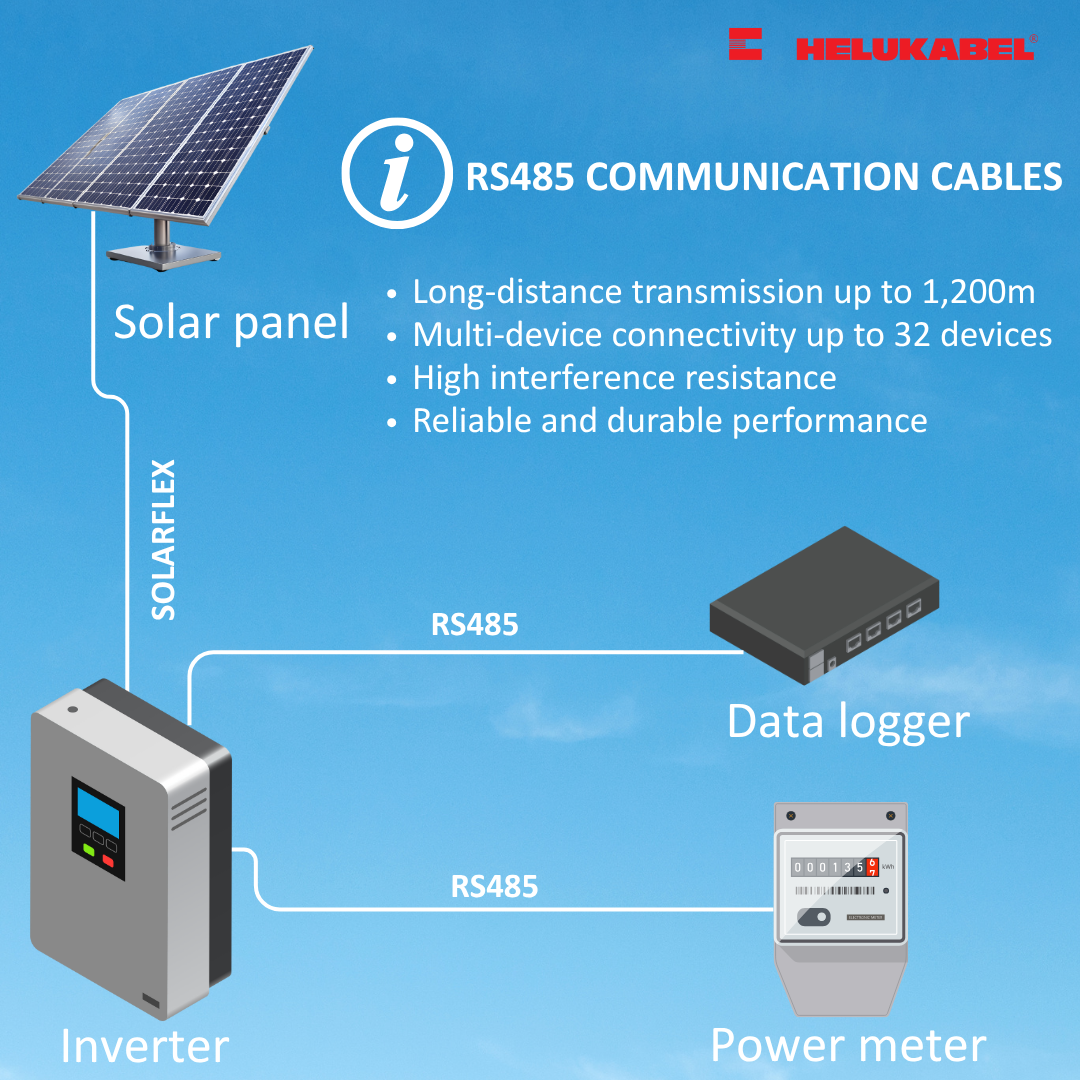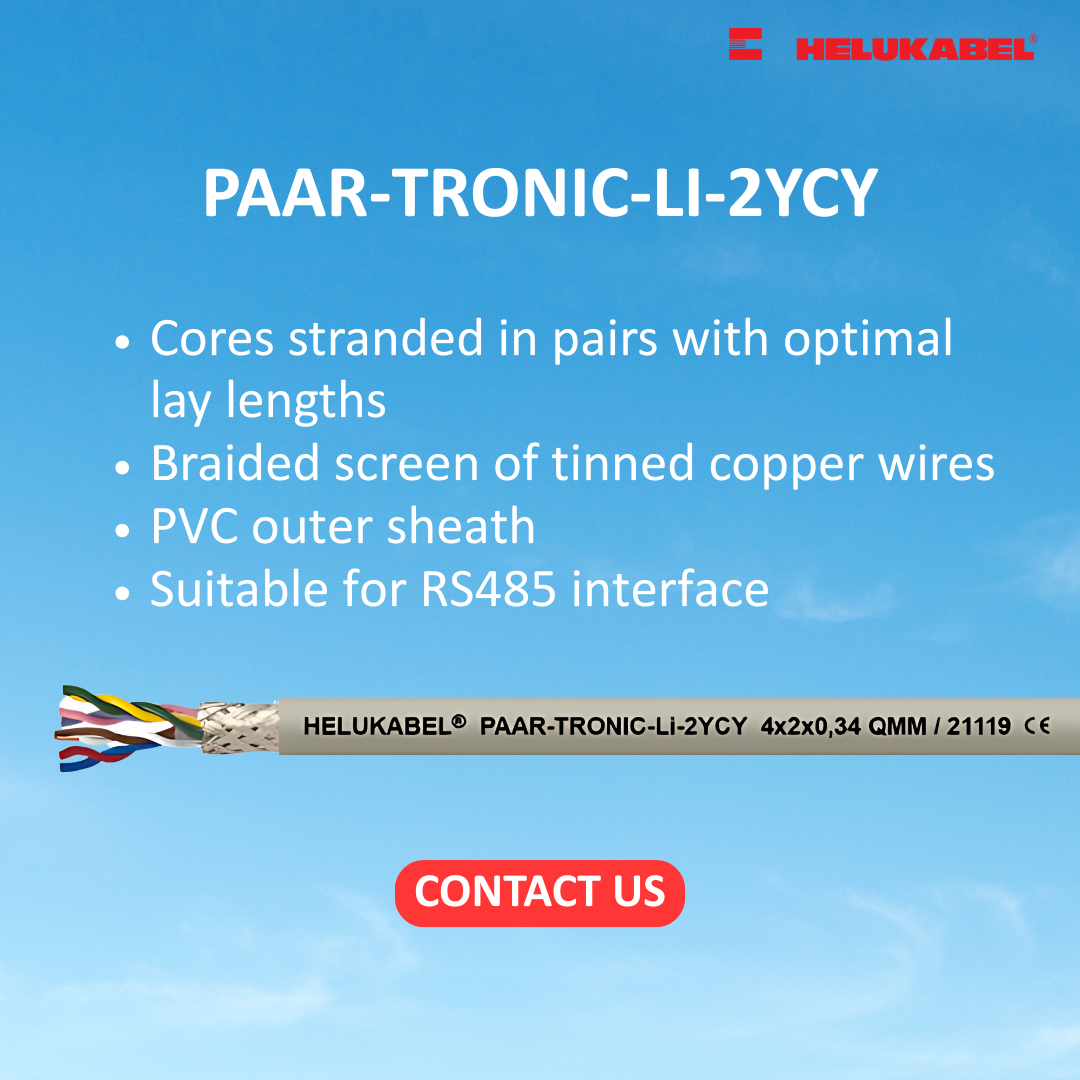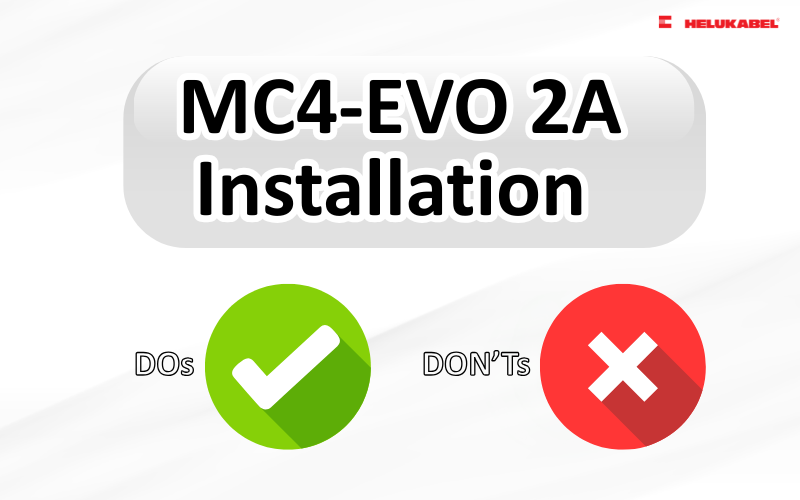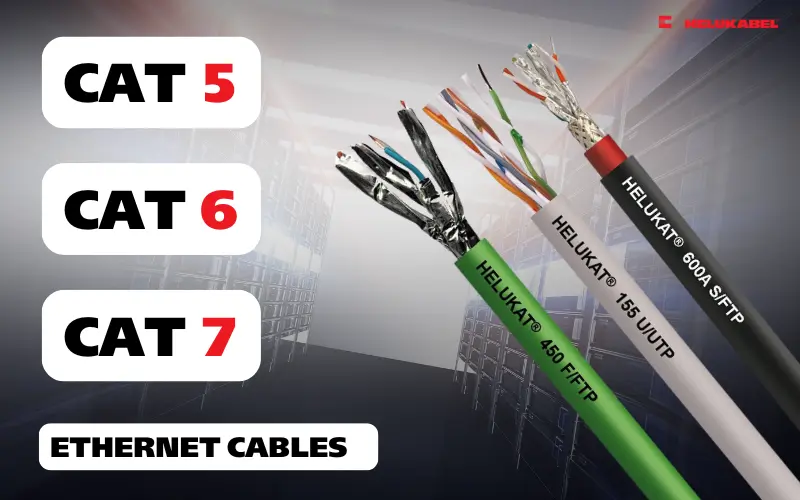Why is RS485 communication cable commonly used in PV systems?
In solar power systems, monitoring, data collection, and remote device control play a crucial role in ensuring stable and efficient operation. That’s why RS485 - an industrial communication standard, is widely adopted as the "nervous system" connecting various devices across the entire setup.
RS485 Standard and the advantages of RS485 cables
RS485 (also known as TIA-485(-A) or EIA-485) is a serial communication standard that uses signal lines to transfer data between devices such as computers, PLCs, sensors, and controllers. RS485 offers several outstanding advantages that make it ideal for solar applications — especially in environments with high interference, long-distance transmission needs, and a demand for stable, accurate signal transfer. Key benefits include:
· Long-distance transmission: Supports distances up to 1,200 meters without a repeater.
· Multi-device connectivity: Enables multi-point communication with up to 32 devices.
· High interference resistance: Differential signal transmission significantly reduces electromagnetic interference - perfect for industrial and solar environments.
· Reliable and durable: As a widely supported industrial standard, RS485 ensures consistent and long-term performance.
The RS485 cable itself is specifically designed for industrial communication, with typical features such as:
· Twisted pair construction to enhance interference resistance.
· Shielding layers that minimize signal interference from surrounding electrical equipment.
· Pure copper conductors, with various cross-sections suitable for different distances and applications.
· Outer sheath made of PVC or LSZH (Low Smoke Zero Halogen) for fire resistance and safer indoor or harsh-environment installations.

Applications of RS485 cables in solar power systems
In solar farms, RS485 cables are used to connect individual solar inverters with a centralized monitoring system, allowing real-time performance tracking and optimization of power generation.
Specific devices that commonly use RS485 connections include:
· Inverters: Communicate real-time power output, voltage, temperature, and operational status to the central monitoring system.
· Data loggers: Aggregate data from inverters and sensors to upload to local monitoring software or cloud platforms.
· Smart meters: Measure electricity production and send feedback to the control center.
· Charge controllers: Interface with energy storage systems to manage battery charge/discharge intelligently.
For solar power systems that require stable signal transmission in high-interference industrial environments, HELUKABEL's PAAR-TRONIC-Li-2YCY cable is an ideal choice. This signal cable is designed with cores stranded in pairs with optimal lay lengths, braided screen of tinned copper wires and a high-quality PVC outer sheath - ensuring excellent EMC performance and stable long-distance transmission.
The cable is particularly well-suited for RS485 communication, connecting devices such as inverters, data loggers, smart meters, and charge controllers in solar power systems. With its flexible design, easy installation, and high durability in harsh environments, PAAR-TRONIC-Li-2YCY not only enhances system reliability but also helps reduce long-term maintenance costs.

Contact our team for consultation on RS485 cables for your PV systems!
| Address | 905 Nguyen Kiem Street, Hanh Thong Ward, Ho Chi Minh City 700000, Vietnam |
| info@helukabel.com.vn | |
| Hotline | +84 28 77755578 |
| Website | www.helukabel.com.vn |
| Explore our products and place orders | Tiki | Shopee | Lazada | Product finder |
| Follow us on | Facebook | LinkedIn | Instagram | Youtube | Zalo | WhatsApp | <Tiktok | Spotify |



